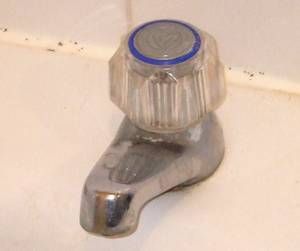Scientists have developed a sugar-fuelled chemical filter to clean up contaminated water.
Provision of clean water is viewed as the leading challenge in the  Twenty First Century, with still over half of the world's population living in unsanitary conditions. The problem is further intensified by the fact that, apart from just sewage which can be filtered out, water sources are also frequently contaminated by persistent organic pollutants such as trichloroethylene and trichlorophenol, which are known to be carcinogenic.
Twenty First Century, with still over half of the world's population living in unsanitary conditions. The problem is further intensified by the fact that, apart from just sewage which can be filtered out, water sources are also frequently contaminated by persistent organic pollutants such as trichloroethylene and trichlorophenol, which are known to be carcinogenic.
Now a team from the University of Kentucky in the US led by Dibakar Bhattacharyya, writing in PNAS, may have the answer in an ingeniuous, low-cost multi-membrane glucose-powered filter that can chemically degrade toxins.
The filter consists of an upper membrane into which is impregnated an enzyme called glucose oxidase. This breaks up glucose molecules to yield hydrogen peroxide, oxygen and gluconic acid. The hydrogen peroxide then passes into a second, lower-layer membrane into which are embedded iron oxide nanoparticles.
These catalyse the decomposition of the peroxide to produce a highly reactive chemical called a hydroxyl radical, which can attack and neutralise toxins present in the water.
As a demonstration of the effectiveness of the technology, the team added a solution of glucose and TCP to the top layer of the membrane, successfully breaking down initially 100% and then about 70% of the TCP passing through.
In a further test on a genuine groundwater sample containing trichloroethylene, over 70% of the chemical pollutant was successfully degraded. With further optimisation, such a system could be used to cheaply detoxify drinking water for the half of the world who currently have no access to safe water supplies.
- Previous Electrons are spherical
- Next Amazing Amazonian geometry










Comments
Add a comment